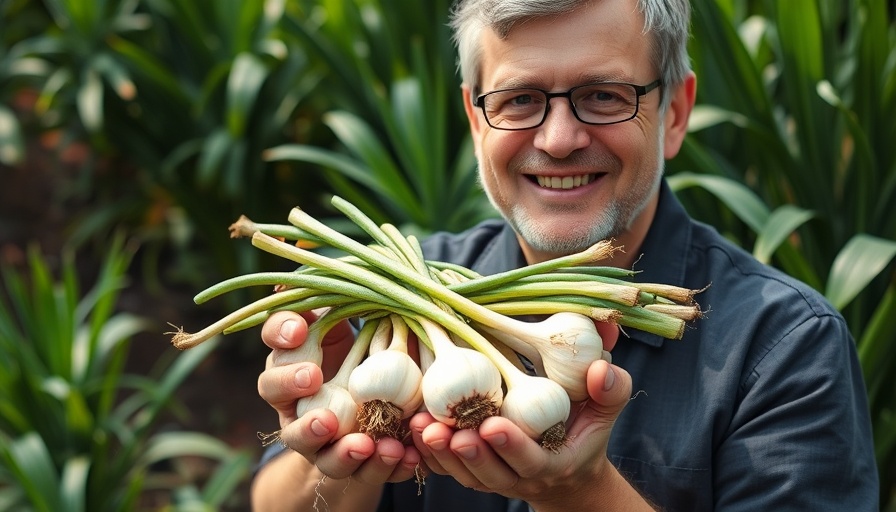
Understanding the Importance of Garlic Harvest Timing
Garlic is one of those garden staples that requires both patience and timing. Known for its culinary versatility and health benefits, this crop demands attentive care, especially when it comes to harvesting. As highlighted in the insightful video, "Don't Harvest Your Garlic Too Late," timing can significantly influence both the quality and longevity of your garlic. Understanding when to harvest impacts not just the flavor, but also how well it stores for future use.
In 'Don't Harvest Your Garlic Too Late', the discussion dives into the critical timing of garlic harvesting, exploring key insights that sparked deeper analysis on our end.
Key Indicators for Garlic Harvest Readiness
One of the most reliable indicators that your garlic is ready to be harvested is the color change in its leaves. According to gardening expert Jeff from Ripe Tomato Farms, when about half to two-thirds of the garlic leaves have turned brown and died off, it’s time to pay attention. If the foliage is completely brown, you may have waited too long, leading to split or shriveled bulbs. Monitoring these visual cues acts as your garden's timely signal, helping you avoid the heartbreaking regret of missing out on optimal harvest time.
The Impact of Late Garlic Harvests
Harvesting too late not only affects the appearance of your garlic but also its storability. When garlic remains in the ground beyond its ideal harvest window, the protective papery coating around the bulbs begins to deteriorate. This breakdown can lead to significant problems: bulbs that should last for months in storage may only last for weeks. For gardeners and families relying on their garlic throughout the year, understanding this timeline is essential for promoting healthy living through conscientious gardening.
Actionable Gardening Tips for Optimal Garlic Growth
To ensure you harvest your garlic at just the right moment, here are three actionable tips:
- Regular Monitoring: As your garlic matures, regularly check for those tell-tale signs of leaf discoloration. Set reminders on your phone or jot down a gardening calendar to track growth progress.
- Community Engagement: Join local gardening groups or online forums. Sharing experiences and tips with fellow gardeners can provide additional insights on optimal harvest conditions specific to your region.
- Experiment: Every growing season offers a new opportunity to learn. If you notice your garlic didn’t store as well as expected, adjust your planting schedule and practices for next season.
Why Knowing This Matters
Understanding the importance of timely garlic harvesting doesn’t just enhance your gardening skills; it also ties directly into sustainable living practices. By maximizing the freshness and preserve quality of your crops, you reduce food waste and promote a healthier lifestyle. Every bulb of garlic you harvest with care contributes to family meals rich in flavor and nutrition.
If you’re a gardener, farmer, or just someone who enjoys growing their own food, take these points to heart to enhance your garlic-growing journey. Remember, timing is everything!
 Add Row
Add Row  Add
Add 




Write A Comment